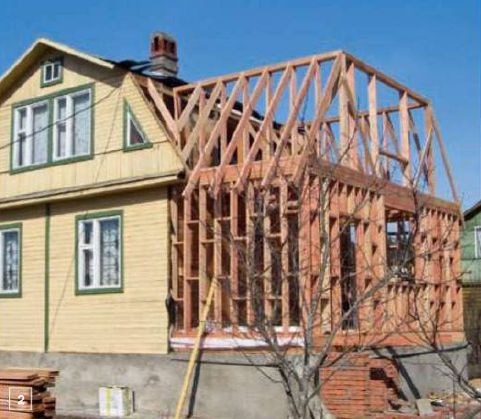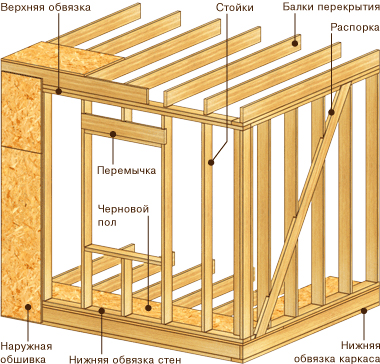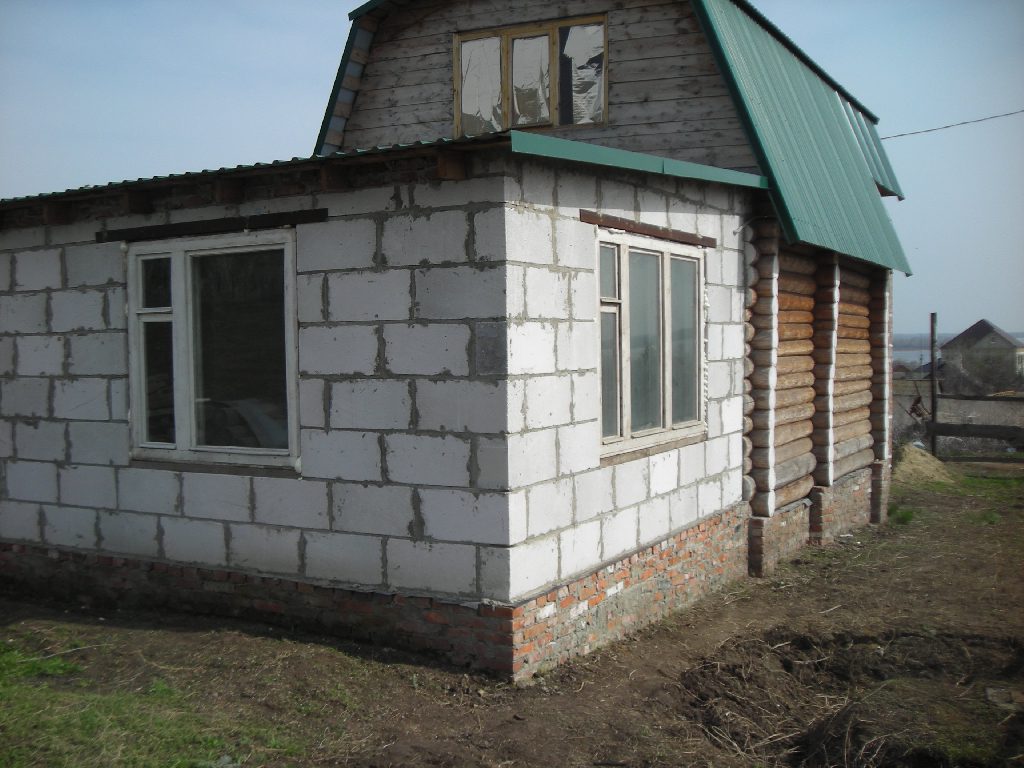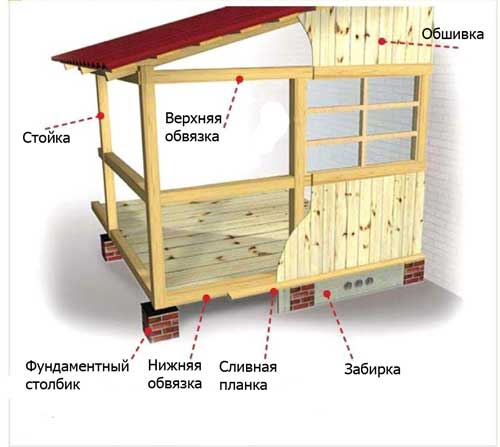How to make an extension to a wooden house?
A good extension to a wooden house can not only increase its useful area, but also emphasize style and originality.
Wooden houses continue to be popular even now. Wood can compete with the most modern building materials without being inferior to them.
We will build
Sometimes, over time, a home needs expansion. Someone does not have enough living space or, in connection with the addition to the family, they need another bedroom, a nursery or a bathroom, someone wants an open summer veranda with a transparent roof, and someone needs access to the garage directly from the living room.
Everyone's desires are different, but all of them can be realized equally easily. The extension of a room, veranda or garage is done in almost the same way - it is not difficult to build it with your own hands.
Despite the fact that the house itself is wooden, the construction of an extension can be carried out with any material. Whatever material is chosen for the construction of the extension, the work begins with the project.
The project is needed to take into account all the nuances on paper and avoid mistakes in the work.
It is necessary to sketch a plan on a scale, calculate the consumption of materials. You can make several options, and then choose the best one.
When drawing up a project, all building codes and regulations should be observed, since finished projects must be agreed upon at the BTI and in the housing sector.
If it is impossible to draw up a project and draw a plan on your own, then you can turn to specialists for help.
After the project is drawn up and approved, construction can begin. At the moment, the law does not prohibit starting construction even before the project is approved, however, if errors or violations of building codes are found in the project, the owner may be required to demolish the unauthorized building.
When attaching non-capital structures - an open veranda, a terrace - the project will not have to be coordinated, this applies only to capital structures.
Finally, the papers are finished and the project is signed. The first step is to inspect the wall to which the building will adjoin, and the adjacent part of the foundation.
If something needs to be strengthened or patched up, then this must be done before the start of the main construction.
If you plan to attach a full-fledged room, then the decoration and plaster from the wall must be removed.
In the case of an extension of a garage or terrace, this can also be done, but not necessarily. When an entrance from the house is provided for the extension, it must also be cut through before construction begins.
This must be done correctly so as not to damage the strength of the wall and not weaken it.

The basis of the future extension is, of course, the foundation. The quality and durability of the structure depends on it.
Laying the foundation of an extension is the same as laying the foundation for a separate building.
But there is one subtlety here: it is important to correctly attach the new foundation to the foundation of the old house.
Both parts must be a single monolithic structure. If this is not achieved, then the difference in the foundation will crack the walls, and after a few years the extension may collapse.
Therefore, when starting construction, it is very important to pay due attention to the bonding of the foundation.
To do this, you need to completely free the foundation from the finish and dig it to the full depth.
After that, it is necessary to drill holes in the foundation with a diameter of at least 10 centimeters and a depth of about half a meter.
These holes should be located at a distance of 40 - 50 centimeters from each other. In addition to these connecting holes, it is necessary to drill holes for the fittings.
The reinforcing wire inserted into them must be welded to the frame of the future foundation. Before pouring concrete, the foundation of the old house is thoroughly wetted with water - this will ensure the best quality of binding.

After the mortar dries and the fences are removed, the new foundation will be tightly tied to the old one. On it you can create any desired extension with your own hands.
What material can be used to make an extension?
Without a doubt, wood is best combined with wood. But, despite the fact that the house is wooden, an extension to it can be made with your own hands from any material, and not just from a wooden bar.
There is only one detail that needs to be given due attention when building with your own hands - the extension must have a permanent connection with the old house.
This single requirement can be met with any material. With some materials, work will be easier, with others - a little more difficult. Here you need to choose what will be more convenient to work with.
You can consider the following options:
- building from a wooden beam;
- brickwork;
- frame extension;
- construction from foam blocks;
- aerated concrete and other materials.
The construction of a veranda, terrace, summer kitchen is easiest to carry out using a frame structure.
The frame extension is being built a little faster than other projects, but they are practically not inferior in quality.
The frame of the extension itself can be assembled both from wood and from metal. Its reliable connection with the old building seems to be the simplest.
The frame beams are connected to the load-bearing wall of the house with bolts or long self-tapping screws. Between themselves, the parts of the metal frame are welded. If the frame is wooden, then it is fastened with self-tapping screws.

After assembling the frame, it is insulated with glass wool, polystyrene foam or foam plastic. The insulation can be placed in several layers, as it must fill the entire area of \u200b\u200bthe frame. Joints can be fastened with construction tape or other means.
After insulation, the frame building is sheathed with any selected material. Outside, it is good to use siding, lining or other finishing materials.
Usually, the same materials that were used in the main construction are used to finish the extension.
However, when building a frame-based veranda, the materials may be different to emphasize the individuality of the structure.
Inside, drywall, plywood or other options are used for sheathing.
The roof of the veranda can be made of roofing translucent polycarbonate, but if the room is capital, then the new roof should be connected with the old one.
The roof can be both gable and single-pitched, the main thing is that the connection is securely sealed.
The roof is covered with metal tiles, slate or any other roofing materials, except, perhaps, corrugated board. Decking is a rather cold material, moreover, it practically does not isolate sounds.
A photo: 
The connection of buildings from a wooden beam is made using a channel. The size of the channel must be selected based on the size of the timber used - so that it enters the channel tightly enough.
First, the channel is fixed to the walls of the house with bolts, and only then a new bar is attached to them.
For this, you can use self-tapping screws. To protect against rust, metal channels are primed. The joints between the timber and the metal are sealed with a polyurethane-based sealant.
Do-it-yourself extension of a veranda made of wooden beams is a fairly reliable structure. If the insulation of the walls from the timber is carried out correctly, then the room can be used all year round.
A bit about blocks and bricks
If the construction is carried out from brick, foam blocks or aerated concrete, then the connection can be made with steel reinforcement. Metal rods must be cut into pieces of at least a meter in advance.
After laying out a number of blocks, the reinforcement is hammered into the logs of the old house so that its free half falls strictly into the seam between the rows of material.
After the construction of the walls is completed, the gap between the old and new walls must be properly sealed.
A brick extension to a wooden house is strong and durable. The laying of load-bearing walls should be carried out in at least three bricks. In the case of an extension of the veranda, the walls can be laid out in one and a half bricks.
Since brick is colder than wood, such an extension must be properly insulated.
To insulate the extension with your own hands, you can use the following materials:
- Styrofoam;
- polystyrene;
- glass wool.
If the extension is made of foam blocks or aerated concrete, then they do not need additional insulation.
Buildings made of aerated concrete, foam blocks and other blocks based on foamed concrete are themselves quite warm due to the air contained in the pores of the material.
A significant disadvantage of such blocks is that they all absorb water to a greater or lesser extent. Therefore, saving on external waterproofing of a building made of foam blocks is not worth it.
What blocks are best to make an extension? If we compare between aerated concrete and foam blocks, then although they look similar, they have different qualities.
A photo: 
Aerated concrete blocks are much stronger than foam blocks and practically do not shrink. The structure of foam blocks can shrink up to three millimeters per meter.
However, the absorption capacity of aerated concrete is much higher than that of foam blocks, so due attention should be paid to their waterproofing.
On the other hand, a building made of foam blocks and any other concrete blocks also needs to be waterproofed, so the question remains open.
Everyone has the right to decide for himself. Foam blocks are somewhat cheaper than aerated concrete blocks, which can play a decisive role in the choice of material.
